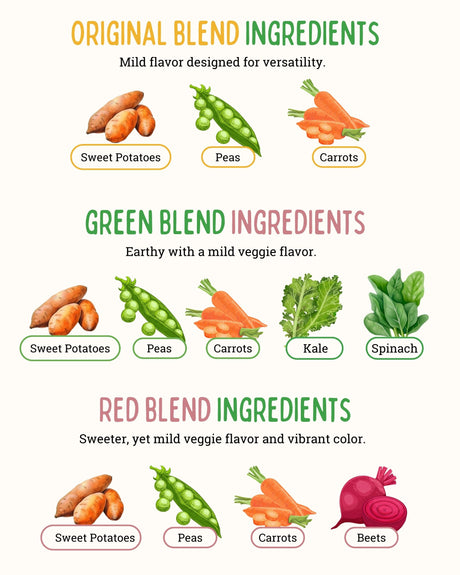Embracing Flu Season with Awareness and Care
As the leaves turn and the air grows crisp, another season quietly makes its entrance: flu season. This time of year, while filled with the joys of fall, brings with it a challenge for parents – protecting their children from the influenza virus.
The flu, notorious for its rapid spread and varying intensity, can particularly impact young ones, whose immune systems are still developing.
The Significance of Prevention and Timely Action
Understanding the flu's potential impact on children is crucial. It's not just about the sniffles and missed school days; the flu can lead to more serious health complications, especially in younger children.
This makes preventive measures, such as vaccinations and good hygiene practices, not just advisable, but essential. Equally important is recognizing the early signs of the flu and seeking prompt treatment. This proactive approach can not only alleviate symptoms more quickly but also prevent more severe health issues down the line.
In this season of uncertainty, being well-informed and prepared is our best defense. By focusing on prevention and being ready to act at the first sign of illness, we can help ensure our children stay healthy and resilient, even when the flu is at our doorstep.
Understanding the Flu Virus
Demystifying Influenza: More Than Just a Common Cold
Influenza, commonly known as the flu, is far more than just an intense cold. It's a contagious respiratory illness caused by influenza viruses that infect the nose, throat, and sometimes the lungs.
The flu can cause mild to severe illness and, at times, can lead to hospitalization or even death. It's characterized by sudden onset of symptoms like high fever, sore throat, muscle aches, fatigue, cough, and headache.
The Flu vs. The Common Cold: Knowing the Difference
One of the key challenges for parents during flu season is distinguishing between the common cold and the flu. While both are respiratory illnesses and share some symptoms, they are caused by different viruses.
A cold usually begins gradually with a sore throat and runny nose, followed by coughing and sneezing. The flu, on the other hand, comes on suddenly and hits hard. Fever, body aches, extreme tiredness, and dry cough are more prominent with the flu. Understanding these differences is crucial for early detection and treatment.
Recognizing the flu's unique characteristics helps us respond more effectively. By being able to differentiate between a common cold and the flu, parents can make informed decisions about when to seek medical attention and how to best care for their children during this challenging season.
Prevention Strategies: Safeguarding Kids During Flu Season
The Flu Vaccine: A Shield for Children
One of the most effective strategies in preventing the flu is vaccination. The flu vaccine is designed to protect against the most commonly circulating flu viruses and is updated yearly.
For children, especially those in school or daycare settings where viruses spread quickly, getting the flu vaccine is a crucial step in their health routine. It not only reduces the risk of flu illness but also can prevent hospitalizations and can be life-saving in children.
Hygiene Habits: The First Line of Defense
Good hygiene practices play a vital role in minimizing the spread of the flu virus. Teaching children the importance of regular hand washing with soap and water, especially before meals and after coughing or sneezing, is fundamental.

Encouraging them to avoid touching their face, particularly their eyes, nose, and mouth, can significantly reduce the risk of infection. Simple habits like using tissues or the elbow to cover a cough or sneeze can also make a big difference.
Nutritional Armor: Strengthening Immunity Through Diet
Nutrition is a powerful tool in boosting a child's immune system. A balanced diet rich in fruits, vegetables, whole grains, lean proteins, and healthy fats provides essential nutrients that support immune function.
Vitamins like C, D, and minerals like zinc, play a significant role in maintaining a robust immune system. Incorporating a variety of nutrient-dense foods in children's meals can help fortify their bodies against the flu virus.
Rest and Activity: Balancing for Optimal Immune Health
Adequate sleep and regular physical activity are pillars of strong immune health. Ensuring children get enough restful sleep is crucial for their body's ability to fight off infections.

Similarly, regular physical activity not only keeps the body fit but also boosts the immune system's response to pathogens. Balancing rest and activity creates an optimal environment for a child's body to defend against the flu virus effectively.
By combining these prevention strategies - vaccination, good hygiene, nutritious diet, adequate sleep, and regular exercise - parents can significantly reduce their children's risk of contracting the flu. It's about creating a comprehensive shield that covers all aspects of a child's health and well-being, especially during the flu season.
Recognizing Flu Symptoms in Kids: A Parent's Guide
Identifying the Telltale Signs
Flu symptoms in children can sometimes be mistaken for a common cold, but there are key differences to be aware of. Common symptoms include a sudden high fever, chills, a dry cough, sore throat, runny or stuffy nose, muscle or body aches, headaches, and fatigue.
Some children may also experience vomiting and diarrhea, though this is more common in younger children than in teenagers.
Fever: A Primary Indicator
One of the primary indicators of the flu in children is a high fever, often ranging from 100°F to 104°F (37.8 °C to 40°C). This fever typically comes on quickly and is accompanied by chills. While a fever is a natural part of the body's defense against infection, it's important to monitor its severity and duration.

Respiratory Symptoms: More Than Just a Cold
Respiratory symptoms such as a dry cough, sore throat, and a runny or stuffy nose are common in children with the flu. These symptoms can be more severe than those experienced with a common cold and can cause significant discomfort.
Body Aches and Fatigue: The Flu's Exhausting Impact
Children with the flu often experience muscle or body aches, which can be quite severe. They may also feel very tired and may want to sleep more than usual. This fatigue can linger even after other symptoms have subsided.
When to Seek Medical Attention
It's crucial to seek medical attention if your child experiences difficulty breathing, bluish lips or face, chest pain, severe muscle pain, dehydration (not urinating for 8-12 hours, no tears when crying, or being unusually sleepy or irritable), seizures, or if symptoms improve but then return with fever and worse cough. These could be signs of serious complications and require immediate medical care.
Understanding and recognizing the symptoms of the flu in children is key to providing timely and effective care. While most children recover from the flu without complications, being vigilant about symptoms and knowing when to seek medical help can prevent more serious health issues.
Creating a Healthy Home Environment: Guarding Against the Flu
Sanitizing for Safety
Keeping your home germ-free is a crucial step in flu prevention, especially during flu season. Regularly disinfect high-touch surfaces like doorknobs, light switches, countertops, and remote controls. Use EPA-approved disinfectants and follow the instructions for effective use. Remember, it's not just about cleaning; it's about sanitizing to kill germs.
Hand Hygiene at Home
Encourage frequent hand washing among all family members. Set up hand sanitizing stations with alcohol-based hand sanitizers in key areas of your home, like the entryway, kitchen, and living room. Teach children the proper way to wash their hands - with soap and water for at least 20 seconds.
Managing Indoor Air Quality
Good air quality is vital for health, especially during flu season. Use air purifiers with HEPA filters to capture airborne particles, including viruses. Ensure proper ventilation in your home by opening windows when weather permits, to circulate fresh air and reduce the concentration of indoor pollutants.
Humidity Control
Maintaining the right level of humidity in your home can also play a role in preventing the spread of the flu virus. Dry air can make the mucous membranes in the nose and throat more susceptible to viruses. Using a humidifier to keep indoor humidity levels between 40-60% can help.
Clean and Cozy Living Spaces
Regularly wash bedding, towels, and soft toys in hot water to kill germs. Encourage children to keep their rooms tidy and clutter-free, as clutter can harbor dust and germs. A clean and organized space not only promotes physical health but also mental well-being.
Creating a healthy home environment is a multi-faceted approach that involves cleanliness, air quality, and a bit of education. By implementing these tips, you can make your home a safe haven during flu season and beyond, protecting your family's health and well-being.
Nutritional Support During Flu Season: Boosting Immunity and Recovery
Power Foods for Immune Support
During flu season, certain foods can be your best allies in boosting your child's immune system. Focus on nutrient-rich foods like citrus fruits for vitamin C, leafy greens for vitamins A and E, and lean proteins for zinc.
These nutrients are known for their immune-boosting properties. Also, don't forget about probiotics found in yogurt and fermented foods, which can help maintain a healthy gut microbiome, crucial for a strong immune system.
Hydration: A Key to Recovery
Hydration is paramount when your child is fighting the flu. Fever, one of the common symptoms, can lead to dehydration.
Ensure your child drinks plenty of fluids - water, herbal teas, and broths are excellent choices. For a soothing treat, try warm water with honey and lemon to ease a sore throat and keep hydration levels up.
Soothing and Nutritious Meals
When children are sick, they often lose their appetite. It's important to offer easy-to-digest meals that are comforting yet nutritious.
Think of warm soups, broths, and stews packed with vegetables and lean proteins. These meals are not only hydrating but also provide essential nutrients to help fight the virus.
Snacks for Sick Days
For snacks, opt for fruits like bananas and applesauce, which are gentle on the stomach. Small portions of toast or crackers can also be good options. If your child is experiencing nausea, ginger tea or ginger-infused foods can help soothe their stomach.
Smoothies for Nutrient Intake
Smoothies can be a great way to pack in nutrients when your child doesn’t feel like eating much. Blend fruits, vegetables, yogurt, and a bit of honey for a nutrient-rich, easy-to-consume meal. You can even sneak in a scoop of vegetable powder for an extra health boost.
Focusing on nutrition during flu season can significantly impact your child's immune response and recovery time. By offering a variety of immune-supporting foods and ensuring adequate hydration, you can help your child feel better faster and possibly even prevent the onset of the flu.
Remember, a balanced diet rich in vitamins and minerals is key to maintaining overall health and well-being.
Final Thoughts
Embracing Wellness in Flu Season
As the crisp autumn air ushers in the flu season, it's time for families, especially those with young ones, to embrace a holistic approach to health and wellness. This season, while challenging, also presents an opportunity to reinforce the importance of health in our daily lives.
Prevention: More Than Just a Flu Shot
Vaccination is key, but it's just the start. It's a powerful tool in our arsenal against the flu, significantly lowering the risk of illness. But let's not forget the everyday heroes: handwashing and surface sanitizing. These simple acts are powerful gestures of care for our families.
Nourishment: Your Secret Weapon
In the world of flu prevention, nutrition takes center stage. A diet rich in vitamins and minerals from fruits, vegetables, and lean proteins is like a secret weapon for boosting immunity.
And hydration? It's not just about quenching thirst; it's about giving the body what it needs to fight off illness.
Recognizing Symptoms: A Parent's Guide
Understanding and spotting flu symptoms early in children is crucial. Look out for signs like high fever and respiratory issues. It's about being vigilant and responsive – knowing when a cuddle and a bowl of soup is enough, and when it's time to call the doctor.
Creating a Sanctuary at Home
Our homes can be sanctuaries of health. Regular cleaning, good air quality, and humidity control can make a world of difference. It's about creating an environment where health thrives – clean, comfortable, and conducive to well-being.
Balancing Rest and Activity
Finally, remember the balance of rest and activity. Adequate sleep is a pillar of health, giving the body time to repair and fight off viruses. And physical activity? It's not just for fitness; it's a boost to the immune system, helping the body to be strong and resilient.
In summary, navigating flu season is about more than just bracing for impact; it's about embracing a lifestyle that prioritizes health and well-being. It's a season to be proactive, informed, and nurturing, ensuring our families not only survive the flu season but thrive in it. Let's make this flu season a time of wellness, care, and resilience.
Leave your comments below; we love to hear from you! And don't forget to follow EasyPeasie for more veggie info and convo on YouTube, Facebook, and Instagram! ~ThePeas














